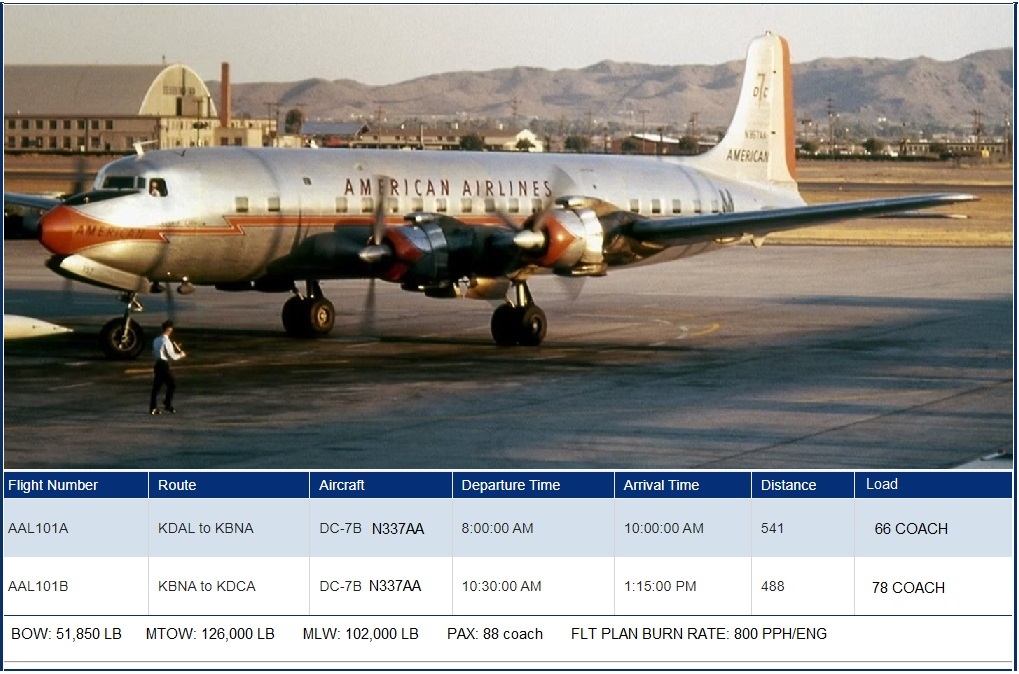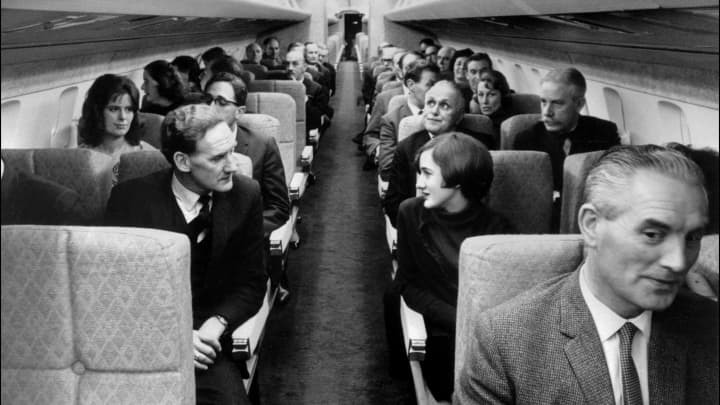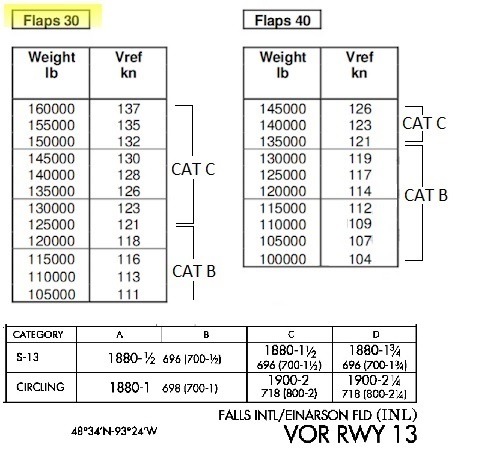Historic Airline Group News Center
September-October 2024


Winter Weights
 Effective September 15, average passenger weight, including one carry-on, is 205 pounds.
Effective September 15, average passenger weight, including one carry-on, is 205 pounds.
Landing Speeds

Landing minimums may vary based upon your landing speed category. The four categories are Category A (<91 KIAS), Category B (91-121 KIAS) Category C (121-141 KIAS), and Category D (141 KIAS+). Which category applies to you is based upon your predicted indicated airspeed at the time you cross the runway threshold. The number used is referred to as Vref or Corrected Vref. This speed varies, primarily based on landing weight. In the example, the 727-200 landing speeds shown are based on the predicted weight of the aircraft at touchdown. It ranges from the maximum of 160,000 lbs/137 kts, to a low 100,000 lbs/104 kts.
Flaps 40 landings are much more likely to be in Category B. However, flaps 40 approaches use a lot of power, which makes a tremendous amount of noise over the neighborhoods under the final approach path. Most airlines, to comply with local noise restrictions, use flaps 30. This reduces the amount of power needed on final approach, reducing the noise footprint considerably.
Other factors include the weather. Certain things can cause you to increase your Vref speed to what is called “corrected Vref”. If the wind is steady, the correction is none. If it’s gusting from 6 to 12 kts, you take half the steady-state wind (3 kts) and add it to all of the gust (6 kts) for 9 kt wind correction. If there is or may be ice accumulation, add another ten knots to Vref. Now we are at Vref+ 9 (wind) + 10 (icing) = Vref +19 kts. Many manufacturers have maximum correction amounts. At our airline, the maximum correction was +20 kts.
If you were landing at 140,000 lbs, your Vref for flaps 30 would be 128 KIAS. If the wind was gusting and the winter storm was blowing, your corrected Vref would be 147 kts. This would put you in Category D minimums. Technically, on this winter night, you couldn’t start the approach if the reported visibility was only 1 mile. Oh, and don’t forget- if the runway is icy, you’ll need to make corrections for a contaminated runway too.
News stories are kept in the Forums for future reference. Look in the Pilot Lounge section.